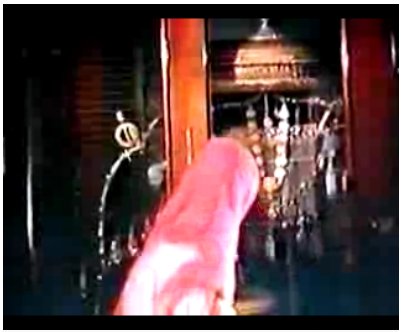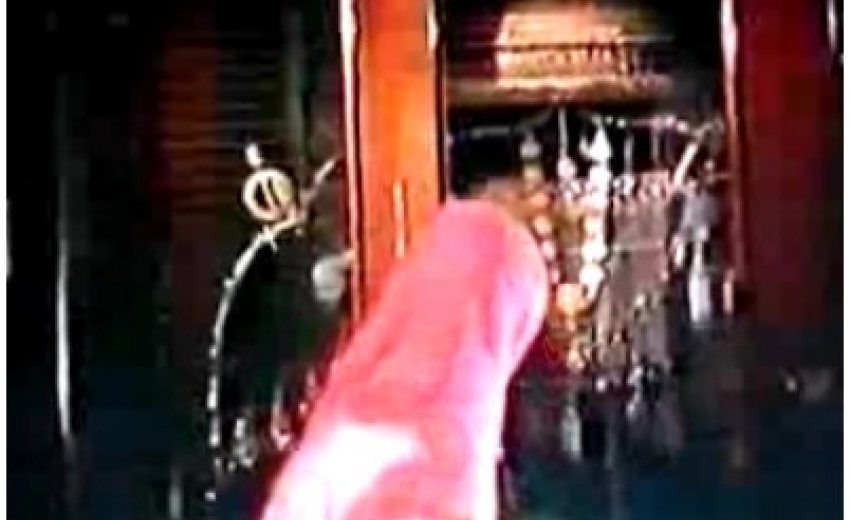
The Shiromani Gurdwara Prabandhak Committee (SGPC) displayed rare items dating back from the fifteenth to eighteenth century inside the sanctum sanctorum of the Golden Temple to mark the Guru Gaddi Nashini of Guru Hargobind, the sixth spiritual master of the Sikhs.
Thousands of devotees thronged the Golden Temple to have a glimpse of these rare invaluable historical items.
All the valuable articles belonging to the Golden Temple were kept for display in the "Toshakhana" (treasury) on the first floor of 'Darshani Deori' (entrance gate to golden temple).
The display of rare items, called as Jlau, has its own pristine grandeur. 'JLAU' literally means a rare glitter that fazes the eyes on its first sight. The Toshakhana is attached by four golden doors. One door has artistic work of flowers, while the remaining three depict different aspects from the lives of the Great Sikh Gurus.
The doors were presented by Maharaja Ranjit Singh.
It was said each gold door was made at a cost Rs.3000.
There is one Canopy of gold weighing twenty pounds. On top of the canopy, a peacock having its neck made of pure Sapphire in a single piece is perched. According to the estimates of a jeweller, only this piece of Sapphire costs around four million rupees.
The stone is without any blemish. In the eyes of peacock there are diamonds. Overall, this canopy is studded with 3600 diamond stones and 101 big pearls. Just under it, there is a diamond headband with strings of pearls. Jewelers of Lahore prepared this headband on the occasion of marriage of Maharaja Ranjit Singh's first son Naunihal Singh.
Impressed by its art and the beauty, Maharaja presented this band as offerings to Golden Temple. Its cost came around Rs nine lakhs at that time.
Apart from this, there is one sword of Maharaja Ranjit Singh. Its hilt is of pure gold studded with pearls and emeralds. The showcase lying in the Toshakhana is displaying five spades having silver handles and gold blades.
In 1973, the Punjab and Sind Bank presented the temple with one golden spade and five silver bowls. At that time Sant Kundan Singh from Jagron presented the temple with one silver spade, one sword with silver hilt and Sikh emblem of gold with silver stand.
According to SGPC, there are five necklaces, one small Canopy and one ring with a Sapphire in middle and eight diamonds around, which were presented by Princess Bamba, granddaughter of Maharaja Ranjit Singh, daughter of Prince Daleep Singh.
Besides, there are also jewels in the Toshakhana from the house of General Dhana Singh Malwai, a General in the army of Maharaja Ranjit Singh.in the early nineties. An American Sikh, who came here to pay obeisance presented a pearl necklace of three strings and three diamonds.
A box lying in the Toshakhana contains a precious gift of a flywhisk made of pure Sandalwood presented by a Turkish Muslim Haji Maskeen. It is said, 1120 lb. of sandalwood was used in the creation of this flywhisk. It took five years and seven months to create. Haji got two whisks prepared; one was presented to Golden Temple while the other one was presented to Mecca, said an official.
The official said that Haji presented this whisk to Golden Temple, when he saw crack in the wall of Mecca while taking round of Mecca. This crack was attributed to Guru Nanak's visit in Mecca. The whisk was presented as offerings in the Golden Temple on 31st December 1925 when Haji visited here. The last item is a canopy (Chanani) of cloth studded with diamonds. The Nizam of Hyderabad presented it to Maharaja Ranjit Singh to express his gratitude for the help he had received from Maharaja Ranjit Singh. Maharaja, in turn immediately presented it to the Golden Temple.
In the year 1911 Sarbarh (the British Manager) of Golden Temple took this Canopy to Delhi, when King George V. Prince of Wales, came to Delhi Darbar.
The canopy was said to have been used in Darbar (Court). The British kept the canopy with them for over one year. Thereafter, it was again brought back to Temple. It is believed that the real stones had been replaced with artificial ones.
As per the tradition, once used article is not put in the service of the temple. It was therefore, put in the Toshakhana. The smallest stone in the canopy was not less than 500 rupees to 5000 rupees then and a big stone may cost as much as 35000 rupees. At the time of presentation its cost was estimated at more than eight million rupees.
The other magnificent item of Toshakhana is ancient Holy Bir of Guru Granth Sahib with gold binding. The fly whisker associated with it is also of gold.
The Toshakhana of Maharaja Ranjit Singh can be seen in the clip from the Film, Nanak Nam Jahaj Hai made in 1969.

